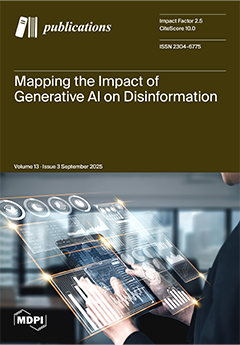The Research Integrity Risk Index (RI
2), introduced as a tool to identify universities at risk of compromised research integrity, adopts an overly reductive methodology by combining retraction rates and delisted journal proportions into a single, equally weighted composite score. While its
[...] Read more.
The Research Integrity Risk Index (RI
2), introduced as a tool to identify universities at risk of compromised research integrity, adopts an overly reductive methodology by combining retraction rates and delisted journal proportions into a single, equally weighted composite score. While its stated aim is to promote accountability, this commentary critiques the RI
2 index for its flawed assumptions, lack of empirical validation, and disproportionate penalization of institutions in low- and middle-income countries. We examine how RI
2 misinterprets retractions, misuses delisting data, and fails to account for diverse academic publishing environments, particularly in Indonesia, where many high-performing universities are unfairly categorized as “high risk” or “red flag.” The index’s uncritical reliance on opaque delisting decisions, combined with its fixed equal-weighting formula, produces volatile and context-insensitive scores that do not accurately reflect the presence or severity of research misconduct. Moreover, RI
2 has gained significant media attention and policy influence despite being based on an unreviewed preprint, with no transparent mechanism for institutional rebuttal or contextual adjustment. By comparing RI
2 classifications with established benchmarks such as the Scimago Institution Rankings and drawing from lessons in global development metrics, we argue that RI
2, although conceptually innovative, should remain an exploratory framework. It requires rigorous scientific validation before being adopted as a global standard. We also propose flexible weighting schemes, regional calibration, and transparent engagement processes to improve the fairness and reliability of institutional research integrity assessments.
Full article





